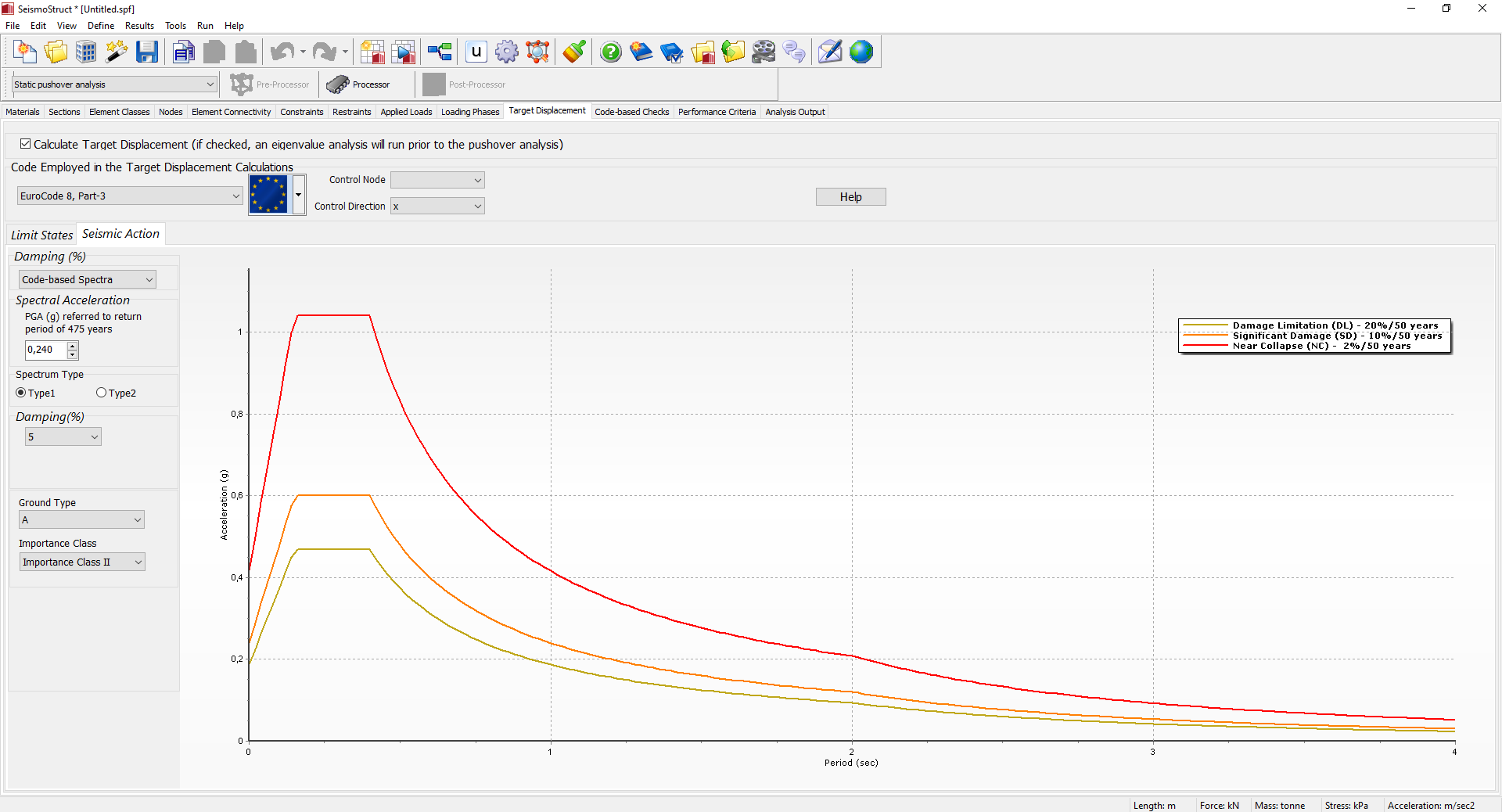Target Displacement
In the case of pushover analysis (conventional or adaptive) users may select the automatic calculation of the target displacement. If the Calculation Target Displacement check-box is selected an Eigenvalue analysis will run prior to the pushover analysis. The parameters below need to be defined in order to calculate the Target Displacement:
- Code employed; six options are currently available: Eurocode 8-Part 3 with the National Annexes available, ASCE 41-23 (American Code for Seismic Evaluation and Retrofit of Existing Buildings), KANEPE (Greek Seismic Interventions Code) and TBDY (Turkish Seismic Evaluation Building Code). Additional information about the employed Codes may be found in here;
- Control Node and Control Direction; these are automatically assigned if the Building Modeller or the Wizard facilities are used;
- The Limit States (or the Performance Levels in the case of ASCE 41-23 and TBDY and the Performance Objectives in the case of KANEPE), for which the Target Displacement is to be calculated;
- The elastic response spectrum which can be derived from the code used in the specific project (Code-Based Spectra option) or it can be defined by the user (User –Defined Spectrum option). In the case of Code-Based Spectra, users should assign the basic parameters needed for the generation of the spectral shape (i.e. peak ground acceleration, damping, spectrum type, ground type and important class In the case of User Defined Spectra, users can select from a list of 29 spectra defined by various National Codes across the world (Code-Based Spectrum option), they may upload an accelerogram based on which the elastic response spectrum will be calculated (Spectrum from loaded accelerogram option) or they may upload an elastic spectrum from a file (Load Spectrum from file option).
